PLA-recyclability -Polymer-catalysts 30-11-2022 - Arhive
PLA-recyclability -Polymer-catalysts
Crude Oil Prices Trend
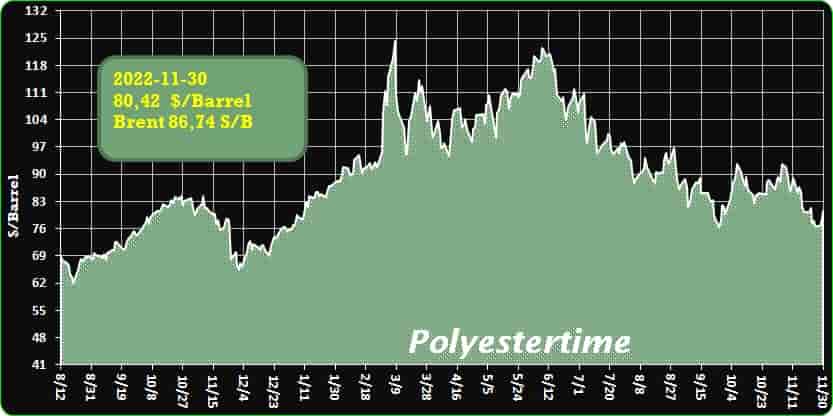
Crude Oil Prices Trend Polyestertime
-Towards functional and future-proof packaging in Europe
Jan Huitema MEP and Guido Aufdemkamp, Executive Director of the Flexible Packaging Europe, share their thoughts on how innovation in the sorting and recycling industries is vital to improve European recycling rates and deliver circularity
By Flexible Packaging Europe
Flexible Packaging Europe is the industry association representing the interests of more than 85 small, medium-sized companies, and multinational manufacturers
Jan Huitema hopes that European Parliament can strike the right balance between functional and future-proof packaging, by ensuring policy framed around three core principles: reduce, reuse, and recycle.
Packaging is everywhere, and with good reason. Packaging protects our products, reduces spillage when using it and informs us about its contents. The flipside of packaging being so abundant is that waste is, too: the average European generates about 180 kilograms of packaging waste per year. Although the existence of waste – or rather ‘secondary materials’ – in itself is not so problematic, the ongoing extraction of natural resources is.
That is why the much-awaited revision of the Packaging and Packaging Waste Regulation (PPWR) should become a key building block for a European circular economy. Having been the Parliament’s rapporteur for the Circular Economy Action Plan own-initiative report, I hope that Parliament can strike the right balance between functional and future-proof packaging, by ensuring targeted policy action around three core circularity principles: reduce, reuse, and recycle. PLA-recyclability -Polymer-catalysts
To start, we should tackle redundant packaging: the “low-hanging fruit”. For example, wine bottles in the Netherlands are, in the majority of the cases, excessively heavy. If their average weight would be reduced by just 100 grams, which is well above the lowest-weighing bottle, 48 million kg of glass could be saved, equivalent to 32.000 tonnes of CO2. At the same time, we should be wary of tunnel vision when it comes to ‘light weighting’. It could have detrimental consequences if it requires packaging to become more complex and harder to recycle. Balance is key, and the Commission should carefully, in consultation, figure out where sectors are able to reduce and how they can do so cost-effectively.
Allowing new recycling technologies to play a role in the supply of secondary materials where needed, could greatly benefit the sustainable production of (food grade) materials
For re-use, developing scalable solutions is essential. Although ambitious re-use targets are essential to reduce material extraction, targets should be attainable for both businesses and consumers. Imagine being a food service SME and shifting from re-usable packaging for take-away to re-usable containers and cutlery, which you will need to buy, re-collect and clean. All in all: a huge undertaking. In that light, new business models and infrastructure are urgently needed to make re-use solutions scalable and sustainable.
Finally, enabling innovation is key for the future of recycling. A good example is the growing shortage of food grade material, which is vital to protect vulnerable produce and cosmetics. Sourcing secondary food grade material is already a challenge but will become even harder as mandatory recycled content targets will increase.
Allowing new recycling technologies to play a role in the supply of secondary materials where needed, could greatly benefit the sustainable production of (food grade) materials and decrease our dependence on third countries for the import of such materials.
With the above in mind, I look forward to the Commission’s proposal for the PPWR to land in Parliament and to work on a fit-for-purpose sustainability framework for European packaging. PLA-recyclability -Polymer-catalysts
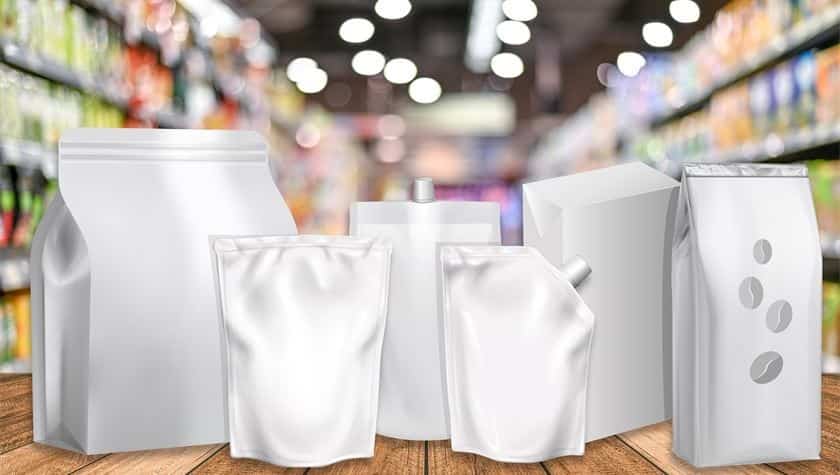
-Erema displays circular technology at K Fair
PET bottle-to-bottle recycling system among technology Austrian firm displays at German exhibition.
Austria-based Erema Group GmbH, which develops and makes plastic recycling equipment, says visitors to its Circonomic Centre display at the K 2022 (K Fair) trade show in in Düsseldorf, Germany, this autumn were able to get a sense of recycling and the circular economy as “a tangible experience.”
Erema describes the trade show as “positive all around, and that applies to the interest shown by visitors as well as to the number of plants sold.”
Remarks Manfred Hackl, CEO of Erema, “Recycling and the circular economy have arrived 100 percent in the plastics industry. This year’s K Fair showed that very clearly.”
Hackl says the decision to have all Erema Group companies exhibiting on the same stand proved to be a good one, because the display was able to provide “an excellent overview of the wide-ranging machine portfolio” of the technology firm.
The machinery provider displayed two new “extrusion innovations” designed to “achieve effective benefits for the quality of melt, recycled pellets and final product, and set the benchmark in terms of energy efficiency for their postconsumer and PET [polyethylene terephthalate] recycling applications.” PLA-recyclability -Polymer-catalysts
Says Hackl, “We have already received the first orders for these two technologies, which confirms that we are meeting customer needs very well.”
Also displayed at the trade fair was bottle-to-bottle recycling technology for the production of food-contact compliant rPET pellets and new sizes of Vacurema technology plants, designed to enable throughputs of up to six metric tons per hour. A new Vacunite plant was ordered by an rPET manufacturer at the show, adds Erema.
The aim of the Circonomic Centre, says Erema, was to draw attention to what is technologically possible in terms of recycling and the circular economy, demonstrating technology that “in many cases has already been successfully implemented in commercial terms,” says Erema.
Erema says 100 percent recycled pellet content can now be found in children’s toys as well as in food packaging.
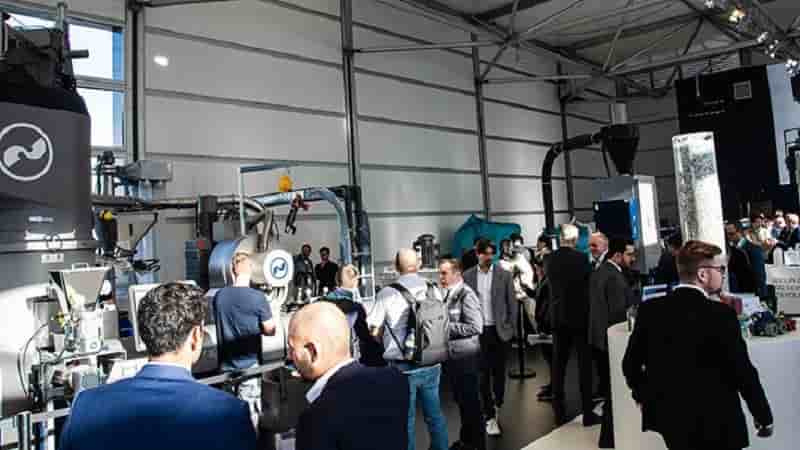
-Highlighting the recyclability of PLA
New whitepaper from TotalEnergies Corbion
A new whitepaper from TotalEnergies Corbion offers a deep dive into the topic of PLA recycling. Stay in the cycle, rethinking recycling with PLA bioplastics offers a summary of the recycling market for PLA, as well as the relevant regulations, and technologies, and effectively makes the case that the recycling of PLA is viable, economically feasible and wholly suitable to be commonly used as an end-of-life solution for PLA bioplastics.
The white paper debunks the myth that PLA cannot be separated out from other waste plastics, pointing to the fact that today, PET, PP and HDPE tended to be the plastics that are sorted and mechanically recycled. PLA-recyclability -Polymer-catalysts
“Thanks to progress in Near Infrared (NIR) technology, density separation, AI and robotics systems in waste management, bioplastics such as PLA can technically be easily separated from other types of polymers on the sorting line. In fact, purities of 97% have been obtained using NIR sorting of PLA, higher than most traditional plastics,” the authors write. When are applied in sorting, PLA can again be easily separated from PE and PP using density separation sink-float techniques, while sorting PLA from a plastic mix including PET is simple using NIR.
Depolymerisation technology allows new recycled PLA to be produced that has the same quality as virgin material as well as being food contact approved. The Luminy rPLA grades manufactured by the company contain 20% or 30% recycled content from a mix of post-consumer and post-industrial recycled PLA, which is third-party certified by SCS Global Services.
The need for plastics to be reused and recycled responsibly is critical. This white paper contains examples of where PLA recycling has already been implemented successfully, and how. PLA-recyclability -Polymer-catalysts
“Valourizing PLA waste as a feedstock for either chemical or mechanical recycling is a huge opportunity,” said Gerrit Gobius du Sart, Corporate Scientist, at TotalEnergies Corbion. “Bridging the gap between insufficient current recycling rates and ambitious upcoming EU targets will mean a gradual phasing out of a linear use of plastics through reduction, reuse, recycling, and recovery of materials.”
The company is committed to developing the recycling value chain together with specialised stakeholders from the complete PLA value chain. In this way, it proposes to stimulate demand for PLA, thereby increasing recycling rates for PLA-based products. Already, it has the infrastructure in place for the chemical depolymerisation of PLA at its commercial plant in Thailand and it is also working to develop this capability in Europe.
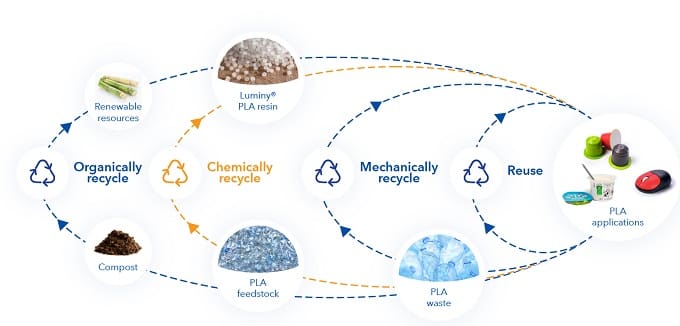
-Kumho Petrochemical partners with Technip to advance eco-rubber
Synthetic rubber and chemicals manufacturer Kumho Petrochemical has advanced its plans to produce rubber using recycled styrene monomers (RSM) recovered from plastics waste, said European-rubber-journal .
The South Korean company has now signed a memorandum of understanding with Technip Energies to license a pyrolysis process enabled by US recycling technology company Agilyx. PLA-recyclability -Polymer-catalysts
Technip Energies is the exclusive licensor for the Agilyx technology for the production of the recycled monomer via the pyrolysis of waste polystyrene.
In a 23 Nov announcement, Agilyx said Kumho Petrochemical will use the RSM in the production of solution styrene-butadiene rubber (SSBR), a key component for the manufacture of tires.
The MoU follows an earlier agreement between Agilyx and Kumho Petrochemical in August last year to study the development and construction of a chemical recycling project in South Korea.
According to Agilyx, Kumho Petrochemical’s stated goal is to commercialise RSM-content products at the beginning in 2026.
Technip Energies’ remit is to provide support in all project areas, including around the transfer of a technology license to Kumho Petrochemical.
We remind, Kumho Petrochemical has announced a major investment initiative which will see the South Korean group pumping KRW6,000 billion (EUR5.5 billion) into existing and new businesses over the next five years. As part of the initiative, Kumho will invest KRW3,300 billion in its ‘core business areas’, which includes nitrile butadiene latex (NB latex) production and styrene solution butadiene rubber (SSBR) manufacturing.
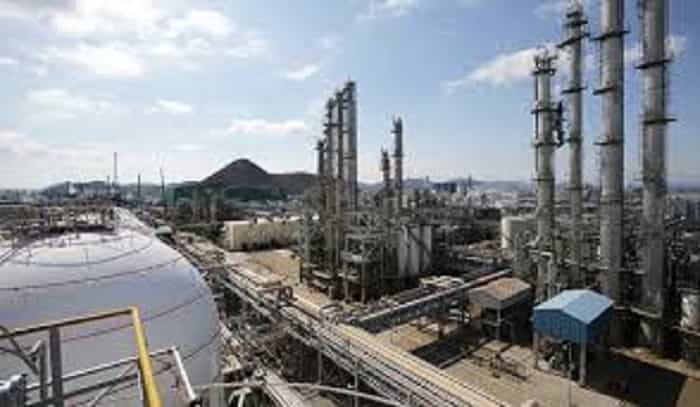
-SIBUR plans production of own catalysts for polymer products
SIBUR (Moscow, Russia) says it is developing and testing a catalyst for use in the production of linear alpha-olefins as part of the company’s strategic program to strengthen its technological independence, said the company.
Pilot tests have taken place for the use of zirconium tetra-isobutyrate, with the catalyst developed by specialists from Sibur’s NIOST research center at Tomsk and the Nizhnekamskneftekhim Scientific and Technical Center (STC), it says.
SIBUR , Russia’s largest producer of petrochemicals and plastics, plans to build a production plant with a catalyst capacity of 50,000 metric tons/year by 2024 at Nizhnekamskneftekhim (Nizhnekamsk, Tatarstan, Russia), it says. Zirconium tetra-isobutyrate and hexene are mandatory components in the polyethylene (PE) production chain, enabling the manufacture of special polymer grades with improved properties for sectors including medical products, packaging materials, and gas and water supply systems, according to the company. PLA-recyclability -Polymer-catalysts
Domestic production by SIBUR of key components in small- and medium-tonnage chemicals is a “necessary element in maintaining the stability of the main technological chains,” it says. The company recently announced the development and testing of hexene, another key component for the production of polymers, with plans to build a 50,000-metric tons/year plant, also at Nizhnekamsk, with start of operations planned in the second half of 2024. Hexene is used in the production of high- and low-density polyethylene.
We remind, SIBUR has launched production of PET granules using recycled feedstock. The new product, Vivilen rPET granules, contains up to 25–30% recycled polymers and will now be manufactured at POLIEF, said the company.
Once the facility reaches its design capacity, each year POLIEF will be able to produce up to 144,000 tonnes of Vivilen PET granules with a share of recycled content.
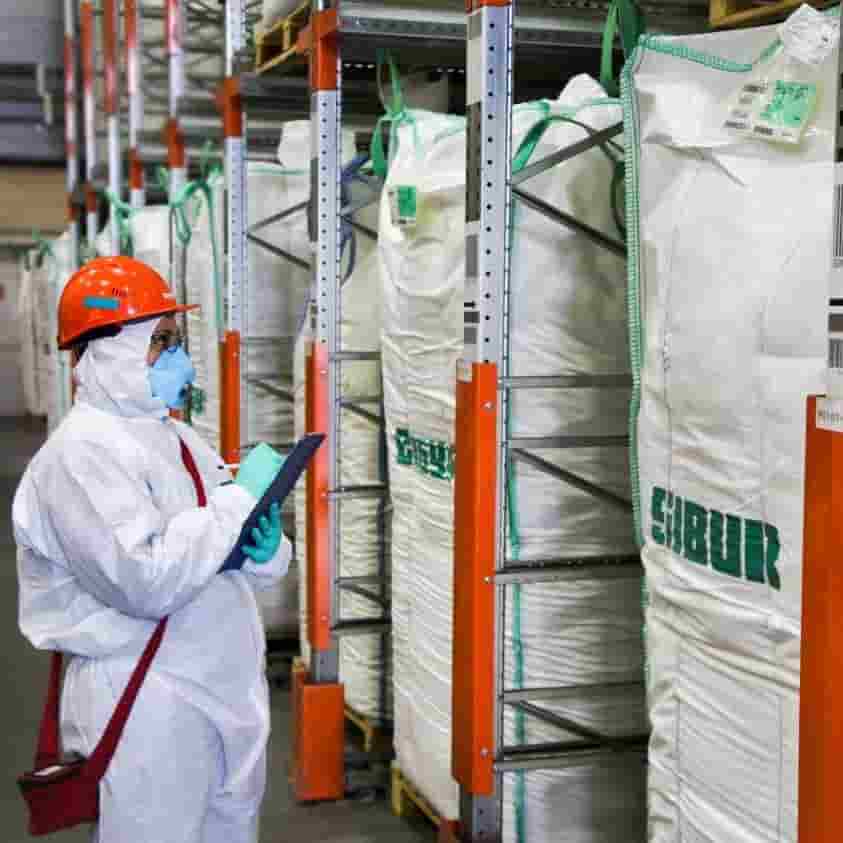
-LyondellBasell and Audi create first automotive plastic parts from mixed automotive plastic waste
LyondellBasell (NYSE: LYB) and Audi today announce a first time collaboration to help close the loop for mixed automotive plastic waste. Audi is installing plastic seatbelt buckle covers in the Q8 e-tron made using LyondellBasell plastic that supports the sourcing of feedstocks from mixed automotive plastic waste. Plastic components from customer vehicles that can no longer be repaired are dismantled, shredded, and processed by chemical recycling into pyrolysis oil. The pyrolysis oil is then used as a raw material in LyondellBasell’s manufacturing process for the production of new plastics, replacing virgin fossil feedstocks. The recycled content is attributed to the Audi product via a mass balance approach . PLA-recyclability -Polymer-catalysts
“As part of the PlasticLoop project, we are working with Audi to establish an innovative closed-loop process, recycling plastic automotive parts for use in new vehicles,” said Erik Licht, LyondellBasell Advanced Polymer Solutions New Business Development Director.“ For the first time, we are using chemical recycling to recycle mixed automotive plastic waste into plastic granulate for automotive interior applications. The plastic granulate is then used in the production of the seatbelt buckle covers for the Audi Q8 e-tron.”
With this process, LyondellBasell, Audi, and chemical recycler SynCycle (Next Generation Group and BDI), succeed in recycling a stream of material which today is mostly only suitable for energy recovery. This reduces the usage of fossil-based primary materials for the Audi Q8 e-tron and keeps valuable feedstocks in a circular loop. Materials produced from pyrolysis oil are of the same high quality as virgin materials and have the same properties. Chemical recycling offers an alternative to energy recovery and complements mechanical recycling.
“Audi’s vision is to use secondary materials wherever it is technically possible, economically viable and ecologically beneficial.” says Philipp Eder, Project Manager for Circular Economy in the Supply Chain at Audi. “The PlasticLoop project is part of Audi’s circular economy strategy and a good example of cross-sector cooperation within the Audi supply chain. Findings from the project are also incorporated into the product development of future vehicle projects via the “Design for Recycling” approach.”

-New EU-funded project aims to prevent fires caused by batteries at e-waste recycling facilities
A project that will develop an AI-powered battery detection system utilising data from x-ray detectors and pick-and-place robots has commenced on the 1 September.
GRINNER, funded through the European Union’s Horizon Europe programme, will focus on trying to reduce the impact of one of the key issues that is currently affecting the waste electrical and electronic equipment (WEEE) management chain; that of fires caused by batteries. Such fires cost waste management facilities millions of euros every year, force facilities to close for months if not years, and act as a strong barrier to making Europe circular and carbon-neutral. PLA-recyclability -Polymer-catalysts
The fires are caused when some battery types located inside discarded WEEE, in particular lithium-ion (Li-ion) and nickel-metal hydride (NiMH), are damaged and, as a result, ignite or explode.
The GRINNER project aims to commercialise an autonomous AI-enabled robotic sorting system capable of detecting and removing e-waste containing batteries from processing conveyor belts before they are damaged by machines that crush and consolidate waste. The system will comprise (i) an energy-resolved x-ray detectors; (ii) a software enabled module that will analyse x-ray data and effectively detect waste containing batteries that is then removed by a vision-based pick-and-place robot. The primary output of the GRINNER system will be a low-weight, superfast, automated battery identifier that can be easily incorporated into existing WEEE and other similar recycling environments, to extract batteries and battery containing items, safely and effectively.
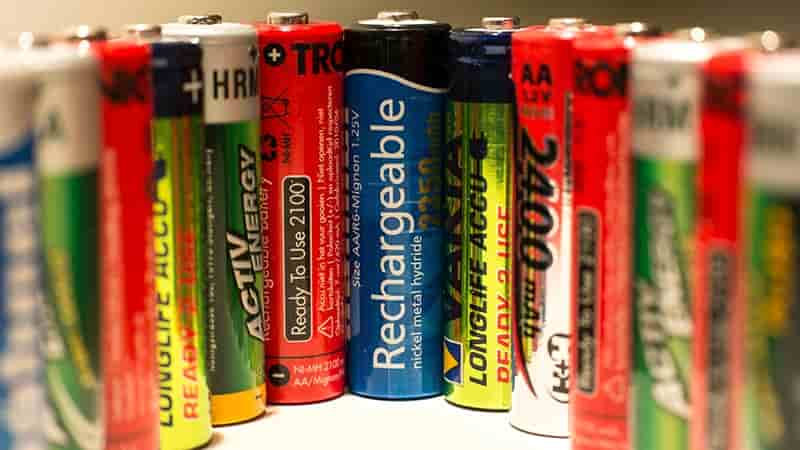
PLA-recyclability -Polymer-catalysts
